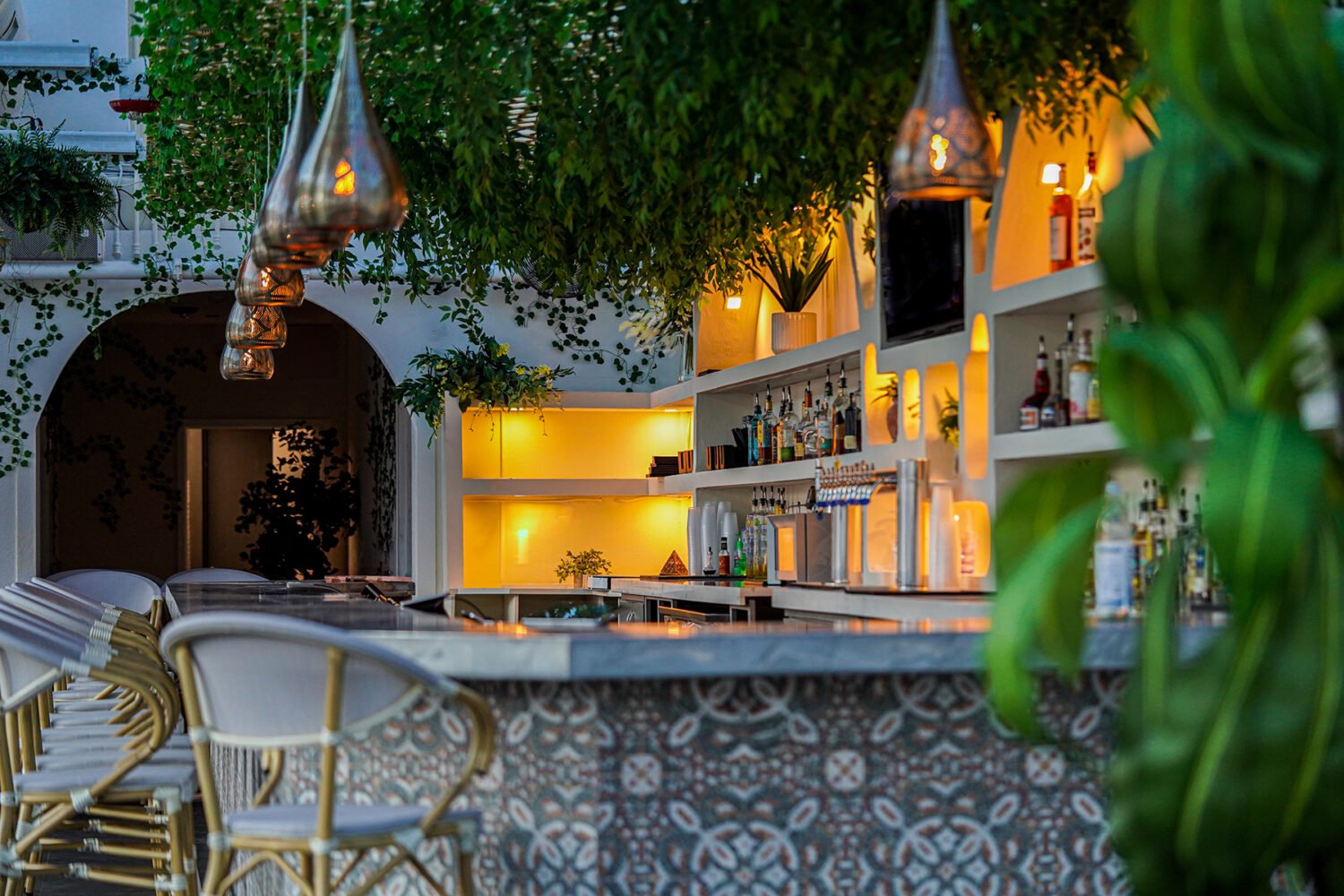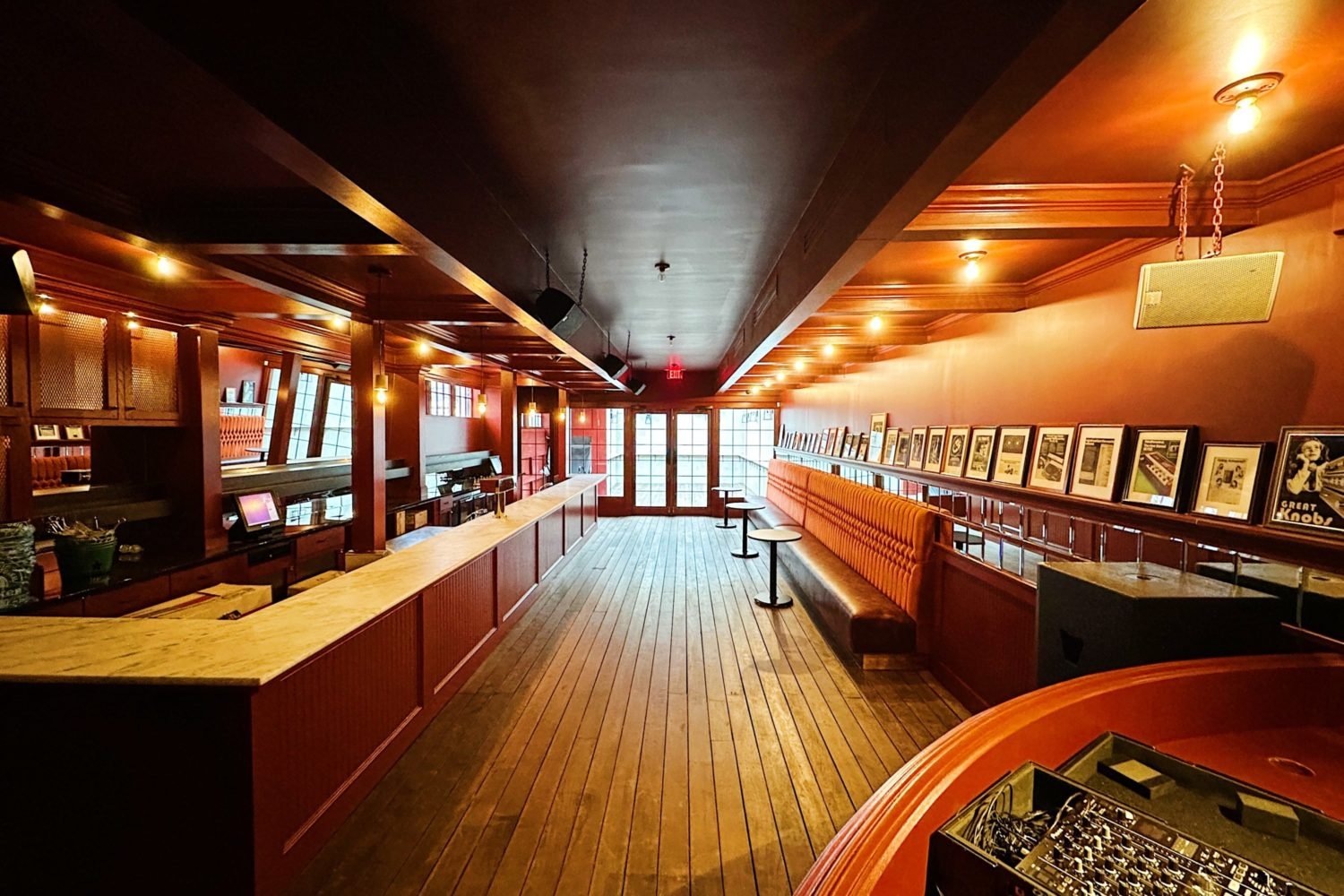In late January, Washingtonians woke to discover that the famous mural next to Ben’s Chili Bowl, bearing the faces of Barack Obama and Bill Cosby, had disappeared. The Ali family, who owns the famous half-smoke joint on U Street, said it was time for a change and started soliciting ideas for a new mural. The news got a lot of attention from locals, but if you’d been a visitor and hadn’t known what you were looking for, you might not have even realized the mural was there, in an alley between Ben’s and the Lincoln Theatre.
Some cities, such as Melbourne and Tokyo, are famous for their alleys, bustling with shops and people and activity. Washington, by contrast, is known for its monumental spaces—Pennsylvania Avenue, the Mall. Yet for much of its history, it has also been a city of alleys, a place where large numbers of people live, work, and play on the streets behind the streets. These passages have a long, colorful history, one that has tracked closely with the ups and downs of life in the capital.
Nowadays, of course, the focus is on the ups: In Cady’s Alley in Georgetown, the design-minded wander through a sleek, European-inspired passageway past modern-furniture stores and architecture firms. In Shaw’s Blagden Alley, once-abandoned stables house coffee shops and galleries. That bustle actually represents a revival of an old Washington tradition. For a long time, though, the conventional wisdom—that alleys breed crime by providing miscreants a place to hide—dominated policy in the District. It nearly led to the alley’s demise.
Alleys first popped up in Washington a few decades after Pierre L’Enfant drew up its urban grid. As the city moved from plan to reality, the vast city blocks he laid out were broken up into building lots. When Washington grew after the Civil War, rising land values nudged property owners into renting or selling off the alley side of their lots to people who couldn’t afford a house on an actual street.
Many of those new alley dwellers were blacks who’d fled the South after slavery. Tight-knit communities formed in the alleys, even though they often shared space with horse stables—and featured homes that were cheaply built and lacked plumbing or heat. But crime and prostitution were also rampant. Police were reluctant even to enter some alleys.
By the 1870s, Congress was already trying to get rid of these byways, and in 1892 it successfully passed a law preventing new houses from being built on streets less than 30 feet wide. Through the early 20th century, the federal government worked to dismantle the alley dwellings that remained. It later got help from developers, who saw alleys as a chance to create additional space for new buildings. After the DC Council was established in the 1970s, property owners could petition it to close any alley it deemed “useless and unnecessary.” As downtown grew, many alleys were incorporated into new office and apartment buildings, making them basically untraceable.
These efforts were pretty successful. There are just 1,249 alley buildings in the District today, down from 3,337 in 1912, according to a 2011 survey by the National Park Service. Only about a hundred are dwellings.
In parts of Washington where planners once erased alleys, up-market developers are creating new ones.
But as new residents began reviving District neighborhoods following the white flight of the 20th century, early gentrifiers began to see a certain beauty in alleys. Some took to fixing up old alley houses in neighborhoods such as Georgetown and Dupont Circle.
Like poor blacks a century earlier, they found rundown buildings, poor drainage, and a lack of formal addresses that made getting mail service or even inviting friends over difficult. In return, they rediscovered the intimate sense of togetherness that had flourished there a century earlier. Buildings close by one another made the space feel small, slowing traffic to a crawl and amplifying any small neighborhood gathering into a happening. In the alley, you could feel a lot more significant than you would on, say, Pennsylvania Avenue.
Neighbors cleaned up trash and lobbied the city for new pavement. Many DC alleys, such as such as Capitol Hill’s Gessford Court, received landmark status as part of larger historic districts, thereby being protected from future harm. For the first time, an alley became a sought-after address.
***
But while recent zoning changes made such dwellings legal again, some alleys such as Blagden have become retail destinations because they were restricted to commercial use. Shopkeepers and restaurateurs value the tight dimensions and pedestrian scale, which lure shoppers to wander around, not unlike a small, open-air mall. Having a business with openings on both street and alley means you can double your chances of being seen by passers-by.
Nowadays, it’s not uncommon to see up-market developers constructing new alleys of their own. A number of mixed-use projects around town—such as CityCenterDC, the Yards, and the enormous Southwest project known as the Wharf—include narrow, pedestrian-dominated streets lined with cafes and boutiques: alleys by any other name.
The Wharf, especially, shows how this type of space has come full circle. Sixty years ago, the District demolished a vast swath of Southwest DC filled with alley dwellings, declaring it a slum and replacing the waterfront with a freeway and a strip of parking lots and motels. Come this fall, however, you’ll once again be able to walk down brick-and-stone-paved streets, past buildings with large garage doors such as the stables that once sat there—except now they’ll roll up to reveal farm-to-table restaurants and pour-over coffee.
A hundred years ago, no one would have guessed that alleys would become some of the District’s most desirable places to live and play. But one thing remains the same, whether you’re in an alley with garbage cans or gourmet food: They reflect whatever’s happening in Washington, from boom to bust and back again.
This article appears in the March 2017 issue of Washingtonian.



















